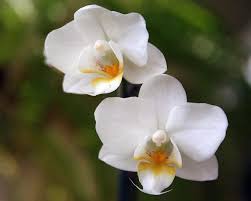# Organizing an Exhibition Featuring White Egg Orchids: A Comprehensive Guide

Hosting a flower exhibition, especially one that showcases the exquisite White Egg Orchid (*Dendrobium*), can be a rewarding experience. Not only does it provide an opportunity to share the beauty and diversity of orchids with the public, but it also helps promote awareness about orchid care and conservation. This guide will walk you through the essential steps to plan, organize, and execute a successful orchid exhibition.
## Table of Contents
1. **Introduction**
– 1.1 Importance of Orchid Exhibitions
– 1.2 Overview of White Egg Orchids
2. **Planning the Exhibition**
– 2.1 Setting Objectives
– 2.2 Budgeting
– 2.3 Choosing a Date and Venue
3. **Creating an Exhibition Theme**
– 3.1 Theme Ideas
– 3.2 Incorporating Educational Elements
4. **Logistics and Setup**
– 4.1 Layout Design
– 4.2 Transporting Orchids
– 4.3 Setting Up Displays
5. **Promotion and Marketing**
– 5.1 Target Audience
– 5.2 Marketing Strategies
– 5.3 Collaborating with Local Businesses
6. **Exhibition Activities**
– 6.1 Workshops and Demonstrations
– 6.2 Guided Tours
– 6.3 Competitions and Awards
7. **Engaging Visitors**
– 7.1 Interactive Displays
– 7.2 Visitor Feedback
– 7.3 Building a Community
8. **Post-Exhibition Follow-Up**
– 8.1 Evaluating Success
– 8.2 Thanking Participants and Sponsors
– 8.3 Planning for Future Events
9. **Case Studies of Successful Orchid Exhibitions**
– 9.1 Case Study 1: Local Orchid Show
– 9.2 Case Study 2: International Orchid Festival
10. **Conclusion**
– 10.1 Final Thoughts
—
## 1. Introduction
### 1.1 Importance of Orchid Exhibitions
Orchid exhibitions play a vital role in promoting horticulture, educating the public about plant care, and fostering appreciation for the beauty of flowers. They provide a platform for growers to showcase their hard work, connect with fellow enthusiasts, and engage with the community.
### 1.2 Overview of White Egg Orchids
The White Egg Orchid, belonging to the *Dendrobium* genus, is renowned for its striking white flowers and fragrant aroma. These orchids are relatively easy to care for and can thrive in various conditions, making them a favorite among both novice and experienced gardeners. Showcasing this beautiful flower at an exhibition can captivate visitors and inspire them to learn more about orchid cultivation.
## 2. Planning the Exhibition
### 2.1 Setting Objectives
Before diving into the logistics, it’s essential to outline clear objectives for the exhibition. Consider what you hope to achieve, such as:
– **Increasing Awareness**: Educating the public about White Egg Orchids and their care requirements.
– **Promoting Sales**: Providing a platform for local nurseries and growers to sell their orchids.
– **Building Community**: Fostering connections among orchid enthusiasts and growers.
### 2.2 Budgeting
Creating a detailed budget is crucial for the success of your exhibition. Consider the following expenses:
– **Venue Rental**: Costs associated with renting the exhibition space.
– **Marketing**: Budget for promotional materials, advertising, and signage.
– **Supplies**: Costs for display materials, tables, and chairs.
– **Staffing**: Wages for staff or volunteers assisting with the event.
– **Refreshments**: If applicable, consider providing food and drinks for attendees.
### 2.3 Choosing a Date and Venue
Selecting the right date and venue can significantly impact attendance. Consider the following factors:
– **Seasonality**: Spring and summer are typically ideal for flower exhibitions when many flowers are in bloom.
– **Venue Size**: Ensure the venue can accommodate the expected number of visitors and exhibitors comfortably.
– **Accessibility**: Choose a location that is easily accessible for your target audience.
## 3. Creating an Exhibition Theme
### 3.1 Theme Ideas
A cohesive theme can enhance the overall experience of the exhibition. Consider themes such as:
– **The Beauty of White Egg Orchids**: Focus on the unique characteristics and care of this specific orchid.
– **Orchids in Nature**: Highlight the natural habitats and ecological importance of orchids.
– **Cultural Significance of Orchids**: Explore the cultural and historical significance of orchids in different societies.
### 3.2 Incorporating Educational Elements
Integrating educational components can enrich the visitor experience. Consider offering:
– **Informational Panels**: Display panels that provide information about the White Egg Orchid, its care, and cultivation tips.
– **Guided Tours**: Organize guided tours of the exhibition to educate visitors about the various orchid varieties on display.
## 4. Logistics and Setup
### 4.1 Layout Design
A well-planned layout is crucial for a successful exhibition. Consider the following:
– **Flow of Traffic**: Design the layout to encourage a smooth flow of visitors throughout the space.
– **Display Areas**: Create designated areas for different exhibitors, ensuring that each has adequate space to showcase their orchids.
– **Seating Areas**: Provide seating areas for visitors to rest and enjoy refreshments.
### 4.2 Transporting Orchids
Ensure the safe transportation of orchids to the venue. Consider the following steps:
– **Proper Packaging**: Use appropriate packaging materials to protect the orchids during transit.
– **Temperature Control**: Maintain optimal temperature and humidity levels during transportation to prevent stress on the plants.
### 4.3 Setting Up Displays
On the day of the exhibition, ensure that all displays are set up correctly:
– **Arranging Plants**: Arrange orchids aesthetically, grouping similar varieties together and creating eye-catching displays.
– **Signage**: Ensure clear signage is in place, indicating the names of the orchids, care instructions, and any relevant information.
## 5. Promotion and Marketing
### 5.1 Target Audience
Identifying your target audience is crucial for effective marketing. Consider:
– **Orchid Enthusiasts**: Targeting local orchid clubs and societies can attract dedicated orchid lovers.
– **General Public**: Promote the exhibition to families and individuals interested in gardening and floral beauty.
### 5.2 Marketing Strategies
Utilize various marketing strategies to promote the exhibition effectively:
– **Social Media Campaigns**: Leverage platforms like Facebook, Instagram, and Twitter to reach a broader audience. Share engaging content, such as photos of orchids and behind-the-scenes preparation.
– **Flyers and Posters**: Distribute flyers and posters in local nurseries, gardening stores, and community centers.
– **Local Media Coverage**: Reach out to local newspapers and magazines to feature the exhibition, generating buzz in the community.
### 5.3 Collaborating with Local Businesses
Partnering with local businesses can enhance your exhibition’s visibility and reach:
– **Sponsorships**: Seek sponsorship from local nurseries or gardening businesses in exchange for promotional opportunities.
– **Cross-Promotion**: Collaborate with florists or event planners to promote the exhibition through their networks.
## 6. Exhibition Activities
### 6.1 Workshops and Demonstrations
Incorporating hands-on workshops and demonstrations can engage visitors:
– **Orchid Care Workshops**: Offer workshops on orchid care, repotting, and propagation techniques to educate attendees.
– **Floral Arrangement Demonstrations**: Invite professional florists to demonstrate how to create stunning floral arrangements featuring White Egg Orchids.
### 6.2 Guided Tours
Organizing guided tours can enhance the educational aspect of the exhibition:
– **Expert Guides**: Enlist orchid experts to lead tours, providing insights into the different varieties and their care requirements.
– **Interactive Q&A Sessions**: Encourage attendees to ask questions during tours, fostering engagement and learning.
### 6.3 Competitions and Awards
Hosting competitions can add excitement to the exhibition:
– **Best Orchid Display**: Encourage exhibitors to compete for the best display award, fostering creativity and innovation.
– **People’s Choice Award**: Allow visitors to vote for their favorite orchids, creating a sense of participation.
## 7. Engaging Visitors
### 7.1 Interactive Displays
Creating interactive displays can enhance visitor engagement:
– **Touch and Feel Stations**: Allow visitors to interact with various orchid species, fostering a hands-on experience.
– **Photo Opportunities**: Set up visually appealing backdrops for visitors to take photos with their favorite orchids.
### 7.2 Visitor Feedback
Encouraging visitor feedback can help improve future exhibitions:
– **Feedback Forms**: Provide forms for attendees to share their thoughts on the exhibition.
– **Interactive Polls**: Utilize social media or apps to conduct real-time polls during the exhibition.
### 7.3 Building a Community
Fostering a sense of community among visitors can lead to lasting connections:
– **Networking Opportunities**: Create spaces for attendees to mingle, share experiences, and exchange contact information.
– **Orchid Clubs**: Promote local orchid clubs and societies, encouraging attendees to join and engage in ongoing activities.
## 8. Post-Exhibition Follow-Up
### 8.1 Evaluating Success
After the exhibition, evaluate its success based on various metrics:
– **Attendance Numbers**: Analyze attendance figures to gauge interest and reach.
– **Feedback Analysis**: Review visitor feedback to identify areas for improvement.
### 8.2 Thanking Participants and Sponsors
Expressing gratitude is essential for maintaining relationships:
– **Thank You Notes**: Send personalized thank-you notes to exhibitors, sponsors
, and volunteers who contributed to the exhibition’s success.
– **Social Media Acknowledgment**: Acknowledge participants publicly on social media, showcasing their contributions.
### 8.3 Planning for Future Events
Reflecting on the exhibition can inform future planning:
– **Identify Improvements**: Use feedback and evaluations to pinpoint areas for enhancement in future exhibitions.
– **Establish a Calendar**: Begin planning future events, establishing a calendar of exhibitions or workshops to keep the momentum going.
## 9. Case Studies of Successful Orchid Exhibitions
### 9.1 Case Study 1: Local Orchid Show
In a recent local orchid show, organizers successfully attracted a diverse audience by:
– **Engaging Marketing**: Utilizing social media and local press coverage to generate buzz before the event.
– **Diverse Activities**: Offering a range of workshops, guided tours, and interactive displays, ensuring there was something for everyone.
### 9.2 Case Study 2: International Orchid Festival
The International Orchid Festival has set the standard for large-scale exhibitions through:
– **Global Participation**: Attracting exhibitors from around the world, showcasing rare and exotic orchids.
– **Collaborative Workshops**: Partnering with international experts to offer high-quality educational content.
## 10. Conclusion
### 10.1 Final Thoughts
Organizing an exhibition featuring White Egg Orchids can be a fulfilling endeavor that celebrates the beauty of nature and fosters community connections. By carefully planning, promoting, and executing the event, you can create an unforgettable experience for attendees while promoting awareness of these stunning flowers.
Through engaging activities, educational opportunities, and a sense of community, your orchid exhibition can inspire a newfound appreciation for the enchanting world of orchids and encourage visitors to embrace their passion for gardening and floral beauty.

